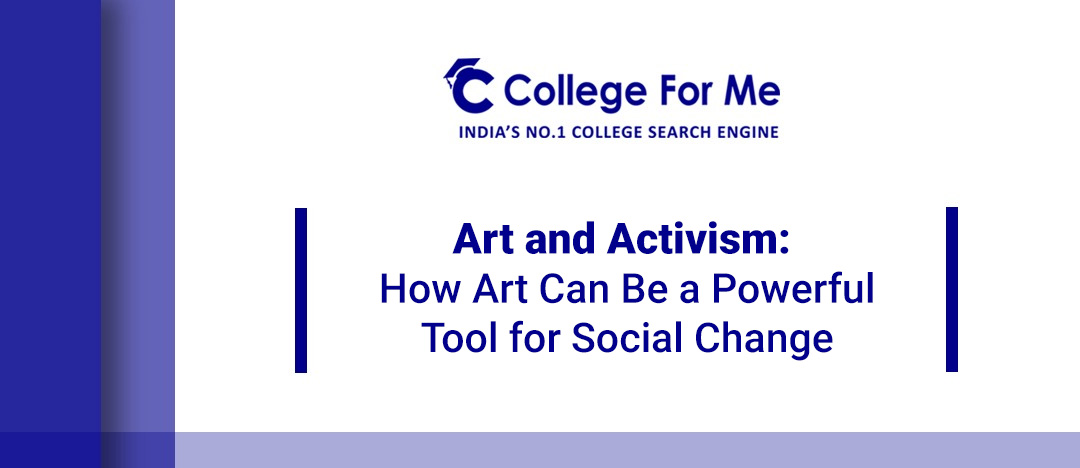Career Scopes Of A B.Tech. Student
There is a high demand for B.Tech. degree holders in the private sector, yet, there is also the opti...

Art has the remarkable ability to transcend boundaries and connect with people on a profound emotional level. Beyond its aesthetic appeal, art has often been a catalyst for change, a powerful tool that artists use to shine a spotlight on social issues and inspire action.
In this blog, we'll delve into the world of art activism, exploring how art can be a potent force for social change.
Art as a Mirror of Society: Art reflects the world around us, both its beauty and its injustices. Artists have a unique vantage point to observe and comment on societal issues, making the invisible visible. From Francisco Goya's "The Third of May 1808" to the modern works addressing climate change, art holds a mirror to society's triumphs and shortcomings.
The Art of Protest: Protest art takes many forms, from street murals and graffiti to powerful sculptures and installations. We'll look at iconic examples of protest art, such as the AIDS Memorial Quilt and the feminist art of the 1960s and '70s, and discuss how these movements ignited change.
Visual Storytelling for Advocacy: Art has a unique capacity to tell stories and convey messages that resonate deeply. Visual storytelling through art can raise awareness and empathy for pressing issues, such as the Syrian refugee crisis or racial injustice. Artists like Banksy and Ai Weiwei are known for their impactful visual narratives.
Art and Social Movements: Many social movements have employed art as a central element of their activism. We'll explore how art played a role in movements like the Civil Rights Movement, LGBTQ+ rights, and the fight against apartheid in South Africa.
The Role of Street Art: Street art is a form of public art that often challenges the status quo. We'll discuss how street artists use their work to reclaim public spaces, communicate dissent, and give voice to marginalized communities.
Art for Healing and Empowerment: Art therapy has been recognized as a healing tool for individuals and communities. We'll examine how art is used to help survivors of trauma, combat PTSD, and empower marginalized groups to express themselves.
Art's Influence on Policy and Legislation: Art has the power to influence policymakers and legislation. We'll look at instances where art has played a pivotal role in changing laws and regulations, such as environmental art advocating for conservation measures.
Artistic Collaborations and Collective Action: Many artists collaborate with activists and organizations to amplify their message. We'll explore examples of artists partnering with NGOs, community groups, and social justice movements to drive change.
Challenges and Controversies: Art activism is not without its challenges and controversies. We'll discuss debates around cultural appropriation, freedom of expression, and the boundaries of art as activism.
The Future of Art Activism: As society evolves, so too does art activism. We'll speculate on the future of this powerful tool for social change, including the potential of virtual and augmented reality art to engage and mobilize audiences.
Art activism is a testament to the transformative power of creativity. It reminds us that art is not just a reflection of society but a force that can shape it. As artists continue to tackle pressing issues, challenge norms, and inspire collective action, the world is reminded of the profound impact that art can have on society and the potential for positive change it represents. Art activism is a vivid reminder that art is not just something to be admired; it is a call to action and a source of hope for a better world.

There is a high demand for B.Tech. degree holders in the private sector, yet, there is also the opti...

If you are looking for a bright and prospective career, then getting a B.Tech. in CSE must be under ...
Comments (0)